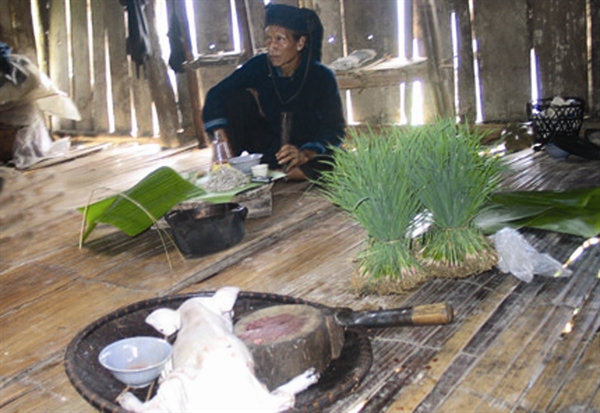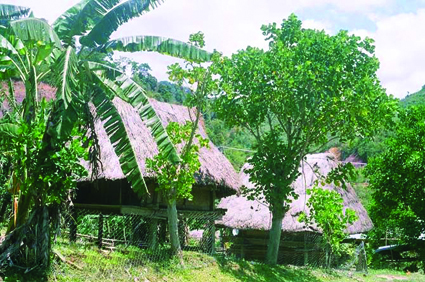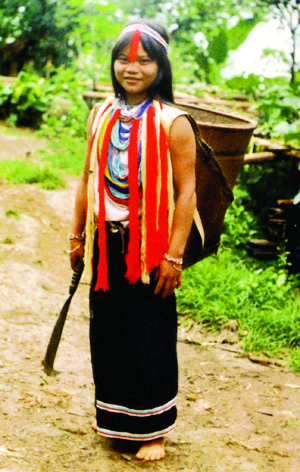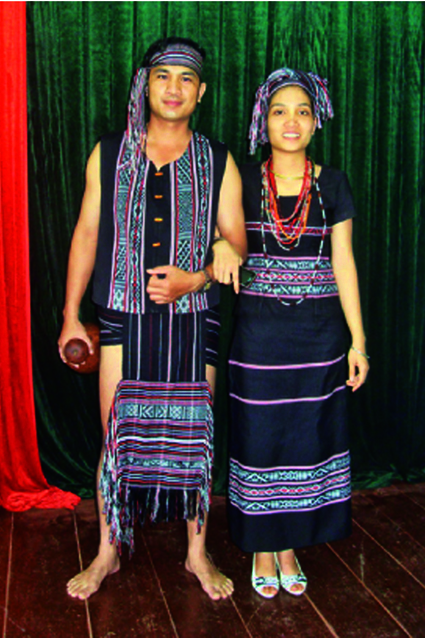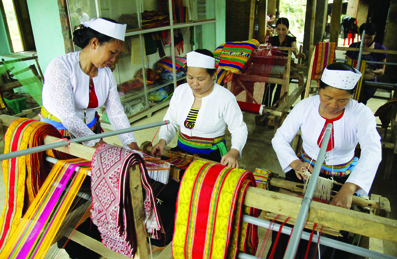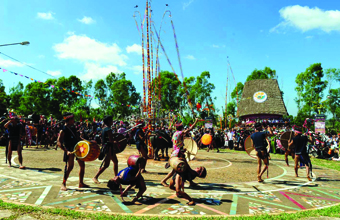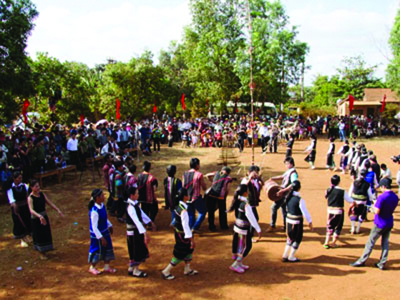>>The “Xtieng” minority’s customs and practices
Ta Thi Tam
Ethnology Institute
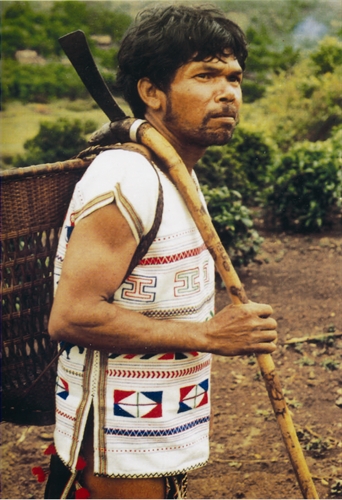 The Xtieng, a Mon Khmer language group, live mostly in the southeastern province of Binh Phuoc with a population of nearly 85,500. A small part of the group live in Dong Nai, Tay Ninh and Lam Dong provinces.
The Xtieng, a Mon Khmer language group, live mostly in the southeastern province of Binh Phuoc with a population of nearly 85,500. A small part of the group live in Dong Nai, Tay Ninh and Lam Dong provinces.
The Xtieng, also called Xa Dieng, Xo Dieng and Xa Chieng, have typical features of Indonesians including dark complexion, wavy hair, broad eyebrows, straight nose and medium stature.
The Xtieng consist of two sub-groups, Bu Dek and Bu Lo. The Bu Dek live in lowland areas and grow wet rice while the Bu Lo live on swidden cultivation on high mountains.
The Xtieng regarded Dieng, a legendary hero in their history, as their forefather. Xtieng people all bear the family name of Dieu.
The Xtieng follow endogamy under which marriage with people from other ethnic groups are largely discouraged. But in present days, exogamy is gradually accepted and becomes more common in the Xtieng community, particularly for marriage with those living together with the Xtieng such as Kinh, Khmer, Mnong and Ma.
However, the Xtieng prohibit marriage among people of the same clan, which is heavily fined and despised under the group’s customary law. Marriage between clan members is allowed only after five generations.
The Xtieng practice monogamy even though men are allowed to have more than one wife. In reality, polygyny is seen only in a few well-off families. Divorce rarely happens in the Xtieng community as is it is subject to hefty fines. A man who commits adultery has to pay a fine as heavy as seven or eight buffalos but his wife is not allowed to divorce him unless he agrees so. In this case, their children will stay with the father. A woman whose husband dies or goes away for a long time can marry again but has to return her husband’s family the wedding presents. A widow can marry a relative of her husband in order to keep the wedding offerings.
The Xtieng are free in love but marriage must get parental consent. After the wedding, the bride stays at her husband’s home unless the groom has not given all wedding gifts exacted by the bride. In this case, the groom has to stay at the bride’s for a couple of years before he can take her home. But this is only the case of a Bu Lo groom while matrilocal stay is a must for every Bu Dek man. The Bu Lo only allow marriage between the son of a paternal aunt and the daughter of a maternal uncle if the uncle is older than the aunt and such marriage is allowed once in each family clan. The Bu Dek’s rule is easier as it permits either the son or daughter of a paternal aunt to marry the daughter or son of a maternal uncle.
The Xtieng home (giau) is a long stilt-house or semi-stilt house which is similar to that of other ethnic groups in the Central Highlands such as Mnon, Ma and Co Ho. A Xtieng home usually consists of three or four nuclear families. Building materials include timber, bamboo, rattan and thatch got from nearby forests. A Xtieng stilt-house has two wooden stilts and walls a bit leaning toward the foot.
Bu Lo and Bu Dek houses have some differences. The Bu Lo’s is a semi-stilt house around five meters wide and three meters above the ground, consisting of two parts. The first part for sleeping has a bamboo floor running along the house. The second part, which has an earthen floor, is where all daily activities take place. Each member family has its own stove. The Bu Lo usually keep rice in the entresol above the stove. The Bu Dek live in a strong decent stilt-house with a bamboo floor. The house also has two parts for sleeping and living. The Bu Dek store rice in a granary about ten meters away from their houses.
Though co-living in giau, families are economically independent, having their own farmland and production tools. A family shares neither meals nor farm products with others. A Xtieng family is headed by the father while the mother takes care of the family’s spending.
Families still share some property such as gong and cattle, which cannot be sold without the consent of all families. Giau also has a head (tom giau) who takes charge of general affairs of the extended family such as selecting land for farming and house building, dividing farmland to families, hosting rituals and other cultural events, receiving guests, keeping common property and settling conflicts among families. Despite having numerous responsibilities, tom giau is not the final decision maker in the extended family, but its members. Nowadays, member families tend to live separately, which builds up the position and power of Xtieng men in marriage and family affairs.
A Xtieng village has at least two clans, each living in one or two long houses. The clan head is often the head of giau. Each clan lives separately or together with other clans. Members of a clan are supposed to uphold their clan’s honor and assist one another. In festive occasions, clans often hold get-togethers to create chances for members to tighten their relationships.
A Xtieng village, called bon, poh or wang, is usually built in a place near a stream and is named after this stream. A village is surrounded with fences and a trench to prevent wild animals and strangers’ intrusion. Property under community ownership includes the village site, hilly and flat land for farming, forests for hunting and a holy forest.
In a Xtieng village, its chief (tom wang or tom bon), who is selected among clan heads, has the highest position. The village chief must be an elderly man conversant with the group’s customs and experienced in farming and life. This man must also have good connections with other villages and know how to protect villagers’ interests. He is responsible for recording and managing forests within the territory of his village, discussing with clan and family heads to divide land to each family and clan, judging violators of village rules and rallying villagers to fight against outsiders when necessary.
The second important person in a Xtieng village is bu kuong (village patriarch). Bu kuongs are prestigious and knowledgeable old men who are consulted by the village chief on important affairs. Bu kuongs are also honorary guests of festive events.
Ranked third is prak, the village wizard, who is usually a woman among the Bu Dek or a man in the Bu Lo community. Praks are respected, and to some extent, feared for their magic powers.
The Xtieng costume is relatively simple. Women wear dresses while men have loincloths. Both men and women have their hair coiled into a bun. People, young and old, wear earrings made of wood or elephant tusk and different kinds of bracelets. They also like wearing simple tattoos. Babies wear tinkling bells at their ankles.
The Xtieng are polytheists, who believe every living thing has a supernatural soul or spirit and thus must be worshiped. The Xtieng worship Yang Lieng, who is believed the founder of the land of the Xtieng. They also worship the gods of sun, moon, wind, rain, thunder, lightning and mountain.
The Xtieng has three important farming rituals corresponding to three stages of rice production: pol-nong, the ceremony to select land for farming, broh-ba, the ceremony to pray for good harvest and pu ba khieu, and the new rice ceremony. Also important is the buffalo stabbing ceremony to show gratitude to deities which involves a ritual to turn the buffalo head, implying gratefulness toward the gods.
The group also has various ceremonies related to major life events, including birth, full month of birth, full year of birth, naming, wedding, illness and death.
The Xtieng own a treasure of legends, tales and poems about their origin and history and origin of deities which are told through tam-pot, a kind of combined singing and reciting of verses. The group is known for their love for music with the gong art symbolizing the spiritual strength of Central Highlands inhabitants. It also possesses original folk music instruments, including various horns, flutes and drums. Xtieng pieces of music are often short and simple, reproducing the sounds of stream, wind, birdsongs and other natural phenomena.-
